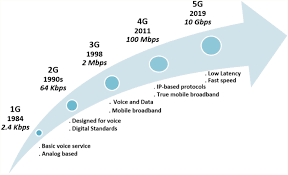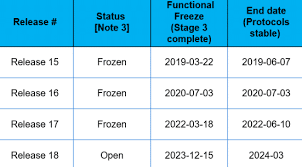What Are 5G Waves: Understanding the Future of High-Speed Wireless
telcomatraining.com – As technology continues to evolve, 5G waves have become one of the most talked-about innovations in the world of telecommunications. Representing the fifth generation of mobile networks, 5G promises unprecedented speed, lower latency, and enhanced connectivity. But what exactly are 5G waves, and how do they shape the future of high-speed wireless communication? Let’s break down the science, technology, and impact behind this revolutionary advancement.
Understanding 5G Waves
5G waves refer to the radio frequencies used to transmit data in fifth-generation mobile networks. Unlike its predecessors, 5G operates on a broader spectrum that includes low-band, mid-band, and high-band (millimeter wave) frequencies.
- Low-band 5G (below 1 GHz) offers wide coverage and reliable connectivity, ideal for rural and suburban areas.
- Mid-band 5G (1–6 GHz) provides a balance between speed and coverage, making it suitable for most urban regions.
- High-band 5G (24–100 GHz), also known as millimeter wave (mmWave), delivers lightning-fast speeds but has limited range and difficulty penetrating buildings.
These frequency bands work together to ensure users experience seamless and ultra-fast connectivity, whether streaming 4K videos, gaming online, or running smart devices in a connected city.
How 5G Differs from 4G
The key distinction between 4G and 5G lies in data transmission speed and latency. While 4G networks typically offer speeds of up to 100 Mbps, 5G can reach 10 Gbps, nearly 100 times faster. Latency—the time it takes for data to travel from one point to another—is reduced to as low as 1 millisecond in 5G networks, compared to around 50 milliseconds in 4G.
This leap in performance enables real-time communication for emerging technologies such as autonomous vehicles, smart manufacturing, and remote surgery, where every millisecond matters.
The Role of Millimeter Waves
Millimeter waves are the driving force behind 5G’s incredible speed. These high-frequency signals allow massive amounts of data to be transmitted quickly. However, because they travel shorter distances and are easily blocked by physical objects like trees or walls, telecommunication companies must deploy more small cell antennas to maintain consistent coverage.
This network of small cells ensures that users experience smooth, high-speed connections even in crowded urban environments. It also supports beamforming technology, which directs signals precisely toward devices rather than broadcasting them in all directions, improving both efficiency and reliability.
Applications of 5G Technology
5G waves are more than just an upgrade for smartphones—they are the foundation of the next technological era. Some of the most promising applications include:
- Smart Cities: Enhanced connectivity allows for better traffic management, efficient energy use, and improved public safety.
- Internet of Things (IoT): Billions of connected devices—from smart thermostats to autonomous drones—can communicate instantly and efficiently.
- Healthcare Innovations: Real-time data transmission makes remote surgeries, wearable health monitoring, and AI diagnostics possible.
- Enhanced Mobile Experiences: Users enjoy faster downloads, immersive AR/VR content, and stable video conferencing on the go.
The Future of High-Speed Wireless
As 5G continues to expand globally, it sets the stage for the 6G era, which will push the boundaries of speed, connectivity, and intelligence even further. Experts predict that 5G will not only transform industries but also redefine how humans interact with technology on a daily basis.
The deployment of 5G waves marks a significant milestone in digital communication. By enabling faster, smarter, and more reliable wireless networks, 5G is shaping a connected world where innovation thrives—and the future of high-speed wireless communication becomes limitless.







